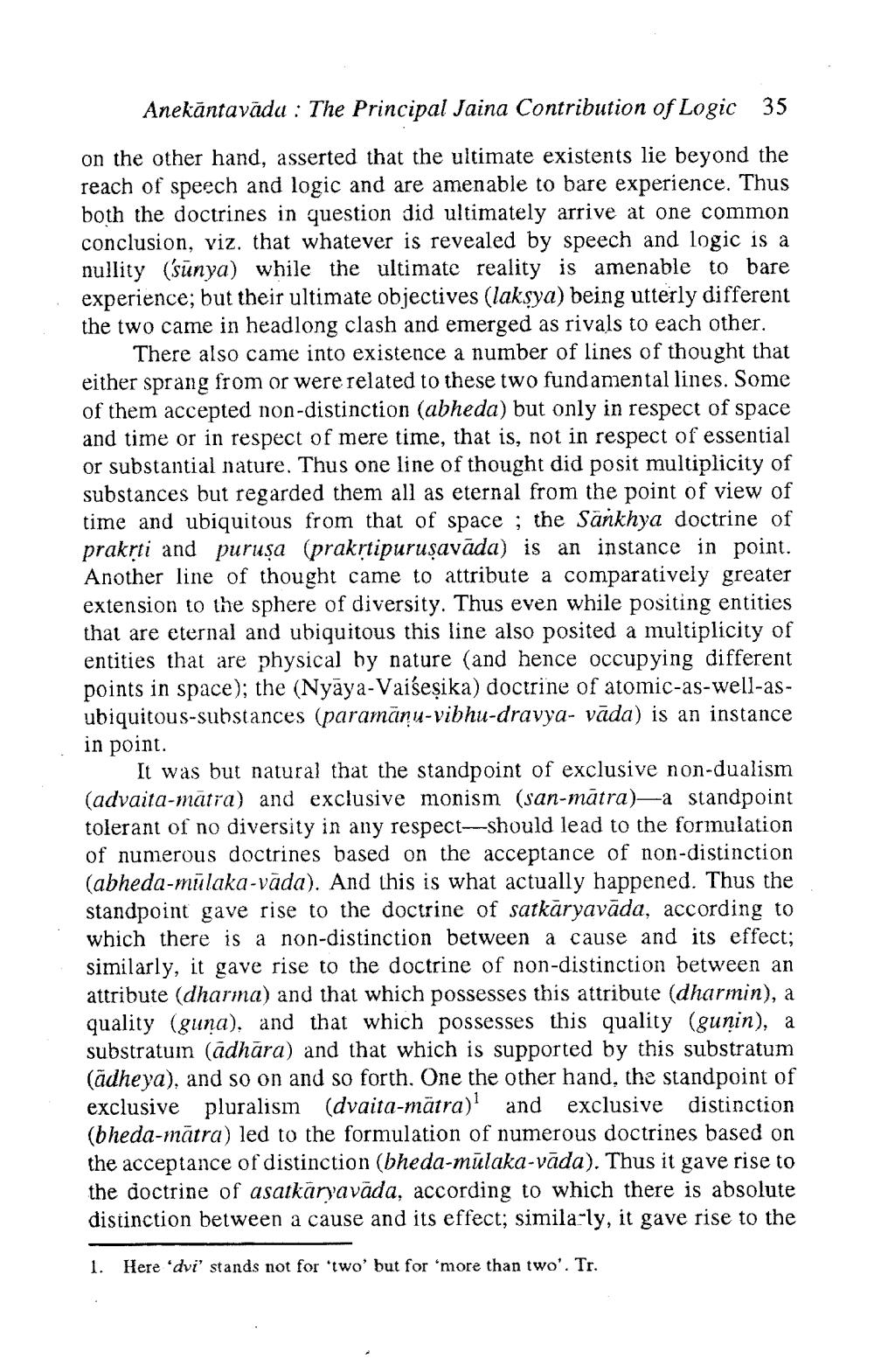________________
Anekāntavāda : The Principal Jaina Contribution of Logic
35
on the other hand, asserted that the ultimate existents lie beyond the reach of speech and logic and are amenable to bare experience. Thus both the doctrines in question did ultimately arrive at one common conclusion, viz. that whatever is revealed by speech and logic is a nullity (sünya) while the ultimate reality is amenable to bare experience; but their ultimate objectives (laksya) being utterly different the two came in headlong clash and emerged as rivals to each other.
There also came into existence a number of lines of thought that either sprang from or were related to these two fundamental lines. Some of them accepted non-distinction (abheda) but only in respect of space and time or in respect of mere time, that is, not in respect of essential or substantial nature. Thus one line of thought did posit multiplicity of substances but regarded them all as eternal from the point of view of time and ubiquitous from that of space ; the Sankhya doctrine of prakrti and purusa (prakrtipuruṣavada) is an instance in point. Another line of thought came to attribute a comparatively greater extension to the sphere of diversity. Thus even while positing entities that are eternal and ubiquitous this line also posited a multiplicity of entities that are physical hy nature (and hence occupying different points in space); the (Nyāya-Vaišeșika) doctrine of atomic-as-well-asubiquitous-substances (paramänu-vibhu-dravya- vāda) is an instance in point.
It was but natural that the standpoint of exclusive non-dualism (advaita-matra) and exclusive monism (san-mātra)—a standpoint tolerant of no diversity in any respect--should lead to the formulation of numerous doctrines based on the acceptance of non-distinction (abheda-mülaka-vāda). And this is what actually happened. Thus the standpoint gave rise to the doctrine of satkāryavāda, according to which there is a non-distinction between a cause and its effect; similarly, it gave rise to the doctrine of non-distinction between an attribute (dharma) and that which possesses this attribute (dharmin), a quality (guna), and that which possesses this quality (gunin), a substratum (ādhāra) and that which is supported by this substratum (adheya), and so on and so forth. One the other hand, the standpoint of exclusive pluralism (dvaita-mätra)' and exclusive distinction (bheda-mātra) led to the formulation of numerous doctrines based on the acceptance of distinction (bheda-mülaka-vāda). Thus it gave rise to the doctrine of asatkāryavāda, according to which there is absolute distinction between a cause and its effect; simila-ly, it gave rise to the
1. Here 'dvi' stands not for 'two but for ‘more than two'. Tr.




